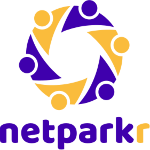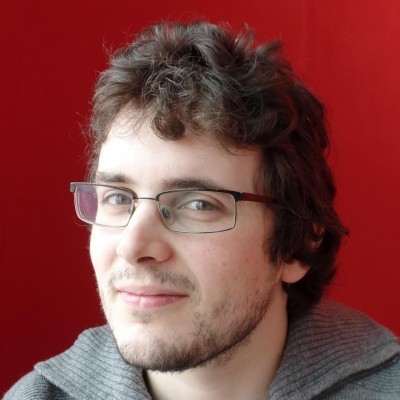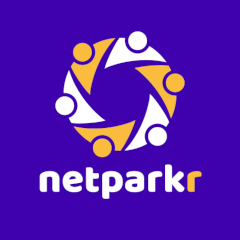Thomas, Dominique, and Otto built a high-performance canoe ONAK, which they raised €235,000 on Kickstarter. They are an experienced outdoor sales manager, engineer, and designer, working to make the best foldable canoe on the market. The canoe folds up to a compact 120 x 40 x 25 cm and weighs 17 kg, making it ideal for car, airplane, train, bus, or bicycle. Otto and Thomas have been urban paddlers for more than 10 years. They wanted to buy a foldable canoe from a store, but there were only two types available. Otto came up with sketches and paper prototypes to launch a state-funded innovation project, which enabled them to grow sales and apply their origami technique to other goods and sectors.
The high-performance canoe ONAK, which Thomas, Dominique, and Otto built, has all of its capabilities. They started a Kickstarter campaign and raised €235,000, 157% more than their goal. However, in creating and marketing the product, they have come across many challenges along this drawn-out process.
What are your qualifications and what are you concentrating on right now?
Hello, gentleman. We are an experienced outdoor sales manager (Dominique), an engineer (Thomas), and a designer (Otto) working to make the best foldable canoe currently on the market. The 4m65-long, very strong, and highly effective canoe ONAK can be dismantled from a small cart in 15 minutes. It folds up to a compact 120 x 40 x 25 cm and weighs 17 kg, making it the ideal size to fit in your car, on an airplane, on a train, on a bus, or behind a bicycle.
Otto is in charge of design, Dominique of sales and operations, Thomas is the CEO and CTO of the firm. Our website is where we mostly sell boats to end users directly, but we also sell through shops and have an ambassador program.
What is your background, and how did you come up with this idea?
Urban paddlers for years, Otto and I. Since more than 10 years ago, we have paddled a canoe in the Belgian city of Ghent’s waterways every week after work. But it was very difficult to store a canoe in the city, and after a while of residing in a city, you tend to have seen everything there is to see. And in Gent. We wanted to look into it more.
So, our original intention was to buy a foldable canoe from a store. But in 2013, there weren’t many choices. There were only two types of canoes available: skin-over frame canoes, which are expensive and time-consuming to manufacture, and inflatable canoes, which perform badly on flat water. We couldn’t waste time getting ready since we wanted to go canoeing after work.
So we made the decision to construct our own canoe. Otto came up with the initial sketches and paper prototypes that made it possible for us to launch a state-funded innovation project. Thanks to Dominique, we are able to grow sales, which enables us to continue improving the canoe and even start applying our origami technique to other goods and sectors. With Thomas’s technical skills, these ideas might potentially become a reality.
According to our CV, Otto and Dominique were both previous employees of AS Adventure, the biggest network of outdoor stores in Belgium. Dominique is the sales and outside manager, while Otto is a salesperson. Given their common industry experience, Otto performed a fantastic job designing and perfecting the canoe thanks to his enthusiasm for product design and education as a graphic designer. Dominique, on the other hand, has tremendous managerial skills and much greater sales knowledge.
Our technical expert is Thomas. He had a successful web development business, worked as a software engineer for a CAM firm, and studied engineering physics. He helped create our patented origami materials and technologies, which he had a big part in developing, and he is in charge of all commercial aspects involving production, technology, IT, and legal activities.
How were ONAK’s foundations laid?
It might be difficult to turn a concept that simply lives in a creative person’s head into a reality. We had to wait four years before we could start giving our customers yachts.
Paper models served as the basis for everything, and the first ones were made in 2013. Soon after, using materials given by producers who shared our vision, we started manually creating the first prototypes. This allowed us to get to the point where we could request government assistance (subsidy), which allowed us to produce a few prototypes of high enough quality to start our crowdfunding campaign in July 2016. These were produced using industrial machinery, including extruded gunnels that were created to order, a laminator from the manufacturer, and a CNC machine that had been modified especially for this project to apply the folding lines.
The prototype was quite unsteady and seemed to be much smaller than the existing boat. Many of the original ideas are still relevant today.
We never questioned the proposal’s technological viability. And we were never shown to be wrong. Like any business enterprise, we had financial worries. We put all of our funds into this, but it was far from enough to create it. Both the product development and the hunt for our initial investors took longer than expected. There have been times when we questioned our ability to keep funding the company, but we have always succeeded.
However, the process was enjoyable for us. Ventures are extraordinary and what drives us comes from creating and trying new things.
Based on your anticipated manufacturing costs, you set a lower and maximum price restriction for the product, respectively.
We weren’t expecting the product to debut on Kickstarter, yet it did. We raised more than € 235 000, surpassing our goal by 157%.
What marketing techniques did you use to grow your company?
We made our debut with a Kickstarter campaign in the summer of 2016. Although the season ends in July, launching a new product is always a guessing game. We were able to use media attention to launch the product globally as a result of the Bizidee competition we received in May and our promotional trip of Europe. We were able to attain 25% of our goal in only one day thanks to this first push, diligent effort, and support from the marketing firms Hyperstarter and FINN.
Our main sales channels for the ONAK Travel Online Kickstarter campaign were social media and the press, and given the visual nature of our product, video was very powerful. Eventually, it gained popularity and was published on Business Insider Design, where it attracted more than a million views in a single day. Even Time magazine wrote about us.
A tangible presence was added to all of this. We visited the Outdoor show in the midst of the campaign and took home the Outdoor Award for best startup. This gave us more exposure and gave visitors a chance to view and touch our goods.
The first few days and hours of any Kickstarter are important. We quickly reached 30% of our objective with the aid of our pre-launch campaign. The rate of receding reduced between 30 and 70%. In order to be highlighted as frequently as possible, we worked really hard. After 70%, it then launched like a missile. We struggled to keep up with the orders as they came in so quickly.
Being active in communication around-the-clock, seven days a week, and changing the commonly asked questions were what actually worked for us.
What were the biggest challenges you faced, and how did you get beyond them?
As previously said, I believed the biggest obstacle was finding funds. Although there have always been technical challenges, humans are fairly skilled at getting beyond them. Hardware, however, is expensive, and your product needs to be finished before it can be sold.
The first challenge, in my perspective, was paying the prototype development and marketing costs required to launch our crowdfunding campaign. Delivering on time was the second challenge since you didn’t have everything under control. It is challenging to manufacture everything on schedule while transitioning from a prototype to a finished product in a few months. especially if you’re the only one who can process the material. We basically had to build our own factory to make boats with a machine that was created only for us. That was a difficult task to complete in just nine months, especially in light of the fact that one of our manufacturers was four months late and another was unable to produce at all on time and had to be replaced.
In order to succeed, ONAK must overcome the product’s unusual seasonality. While demand is limited in the winter, it is high in the summer. This has benefits and drawbacks, but the biggest problem for us is that it takes a while to see a growth trend and that it is hard to predict the quantity of stock needed in the initial years. This has a big impact, especially when you consider that many things need to be ordered months in advance and in big numbers. You incur the danger of losing sales if you purchase too little material, but if you order too much, you run the chance of running out of money despite having 100,000 euros in stock. One of the reasons we want to deal with local producers that can supply quickly and in smaller numbers as much as we can is because of this. We are also creating fewer seasonal applications for our product.
A startup’s financial load, especially early on, may be quite hard on a person’s personal life in addition to the job stress. It’s crucial to keep a balanced mindset and be aware of what you’re getting into.
What are your biggest flaws, exactly?
The biggest drawback of the founding team is that none of us had any prior experience marketing or manufacturing a new product.
The market’s seasonality, conservatism, and resistance to change are its biggest drawbacks. Additionally, our home base is not the best in the West for selling canoes because Belgium has a reputation for being one of the worst.
The ONAK canoe’s main shortcoming in compared to your rivals is its entering trajectory. Many unusual ideas are utilized to make this feasible, and these must be taught. Because of this, initial setting can be time-consuming and challenging, especially for individuals who despise reading manuals.
What were the worst mistakes you made when developing and expanding ONAK?
This was likely done under the premise that we wouldn’t initially need merchants since sales would surge as quickly as they did during the crowdfunding campaign once we could actually deliver the goods. A significant amount of marketing is required before customers choose a high-priced leisure product like ours, and they must have the chance to handle and test the goods. We quickly revised our stance and are currently actively collaborating with retailers and distributors.
We miscalculated how tough it would be to make the building process error-free. We’ve come a long way since last year, but we’re continuously trying to improve, which is essential, especially if you start dealing with resellers.
Another mistake was putting too much trust in the wrong manufacturers. If you rely on one or more of them, be sure they are capable and able to achieve your deadline by looking at their prior performance. One producer volunteered to take care of a lot for us, which seemed really easy but wasn’t. There was a four-month delay as a result of this manufacturer’s lack of knowledge in several areas of the services they provided. The process of choosing specialist producers would have taken significantly less time and money.
What actions would you do differently if you had the chance?
I would suggest to myself that instead of going all-in on direct-to-consumer sales, I should make use of the conventional sales strategy with merchants. I would naturally share the unique market expertise we have currently, other from that. There are a couple additional things, though, that I would change.
What additional learning tools besides mistakes would you suggest for new business owners?
The startup podcast from Gimlet served as a big source of motivation for us. The book “Venture Deals: Be Smarter Than Your Lawyer and Venture Capitalist” was also very useful during our financing rounds.
For further information
You can get all of the information about ONAK on our website. To remain up to date, you may also follow us on Twitter.
We gather unique business case studies from all over the internet, to inspire you with a wide range of business ideas. This case study was supervised by our team and it definitely caught our interest. You can find other inspiring business stories here.







